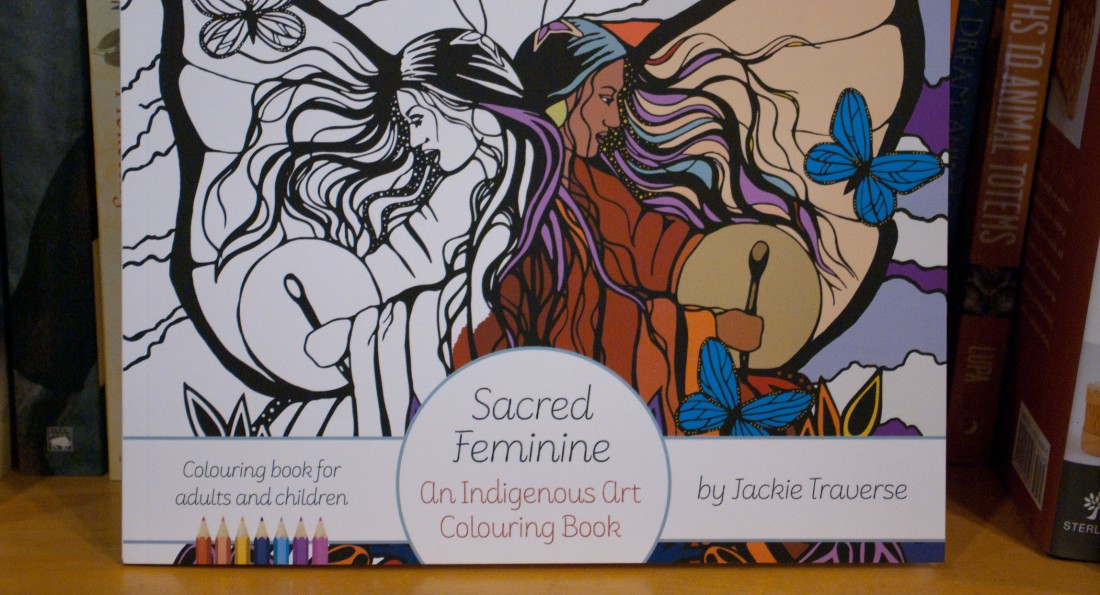Healing with a colouring book
Anishinaabe artist Jackie Traverse publishes a book for women
The latest project of local Anishinaabe artist Jackie Traverse, Sacred Feminine: An Indigenous Art Colouring Book, aims to create a space for healing and reconciliation.
Traverse says it all started when she noticed how popular adult colouring books had become.
“I thought, because I’m a visual artist, I’d love to get in on that and put my work into a colouring book to tell our stories and legends and honour our women,” Traverse says.
Still, it took some convincing for Fernwood Publishing to buy her pitch.
“My first reaction was, ‘Well, we don’t do anything like that, so maybe it’s not such a good idea.’ We let it lie, but she asked again in another conversation a few months later. And knowing Jackie and her art, I could see that this would be something more than just a colouring book,” Fernwood co-publisher Wayne Antony says.
He says this was a learning process for both of them, since neither had compiled or edited a colouring book before.
After narrowing down a list of Traverse’s paintings to 42 selections, they sent the chosen pieces to a graphic designer who removed the colour from them – like going backwards in the process, Traverse says – before sending the black and white copy to Traverse for final touch-up and revision.
Traverse also wrote short descriptions of the pictures to provide further context and explanation.
“I would say 60 per cent of the pictures are of my story. The other 40 per cent are teachings, Indigenous teachings about ceremonies, praying, the mythological little people, stories that our people have told over time,” Traverse says.
She dedicated Sacred Feminine to women: her daughters and granddaughter, the families of missing and murdered Indigenous women, the girls in the Child and Family Services system and the women in corrections facilities.
“I’m all of these things, myself. I want this book to reach girls in care, within corrections, to inspire them and for them to know they are loved. Sometimes young girls in care don’t realize that their parents love them,” Traverse says.
“They run away, end up on the streets, being marginalized, all these issues. That’s why I created the book. Our women need to know that they are loved.”
She says she knows the healing effects of art and colouring firsthand. Traverse lost her siblings when she was a child and art was what she relied on back then. It’s also what she used to turn her life around after spending time in prison and what she hopes to share with others now.
“Art saved my life. It should be healing. That is the intention of the book,” Traverse says.
Antony also sees Sacred Feminine as a means of reconciliation and decolonization between the settler community and Indigenous peoples. He thinks this colouring book could help heal this part of the world a little bit.
“I think that for the settler people who take ahold of it, there will be some healing there, too,” Antony says. “Maybe they’ll learn something by relaxing. Take a deep breath, see things in a different way.”
Sacred Feminine: An Indigenous Art Colouring Book is available for purchase through Fernwood Publishing, McNally Robinson Booksellers, Amazon and Chapters.
Published in Volume 71, Number 10 of The Uniter (November 10, 2016)







